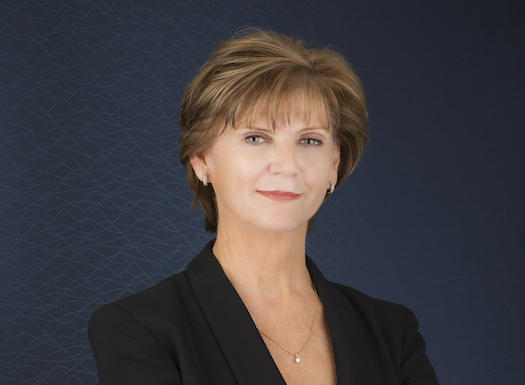Last Saturday radioinfo published an article from Brad Smart titled Wolves at the Door? Telcos introducing new radio broadcast technology.
The article suggests that DAB+ has been superseded by newer technology that’s available through smartphones.
This has drawn a response from one of the world’s foremost proponents of DAB+ Joan Warner, CEO of CRA.
Brad Smart’s analysis of DAB+ and LTE 4G eMBMS technology while interesting neglects one crucial and important fact. This is an expensive and inefficient use of spectrum.
Broadcasters and listeners in Australia want radio to remain free and easily accessible to all, not just those who have a mobile phone or a data plan. More importantly, Australian radio broadcasters and emergency services organisations want a robust, reliable communications channel in an emergency.
As Brad Smart knows, in 2014 CRA commissioned a non-radio telco expert report into LTE 4G, The Reg Coutts Report. Professor Reg Coutts, an emeritus professor of telecommunications at Adelaide University and former member of the NBN Expert Panel report said,
“Internet radio on smartphones by itself cannot substitute for broadcast radio.” Similar studies in Europe showed mobile networks would not come close to being able to support radio listening which is why Europe is moving to DAB+.
Professor Coutts and the radio industry believe they are complementary platforms. While mobile networks are not economically able to accommodate the ongoing demand for millions of hours of quality live radio broadcasting to millions of listeners they are an important delivery method for some listeners. Ongoing analysis of listening habits in many countries confirms that only around an average of 10% of listening is done via IP (including mobile and broadband).
The cost of transmission of DAB+ is independent of the number of listeners and free to air unlike 4G.
While eMBMS can be used to deliver broadcast radio from mobile networks the current specification requires considerable mobile network capacity to be allocated across ALL base stations in a radio licence area. This is an inefficient delivery method and use of spectrum which in turn the broadcast content provider will need to pay for.
Using such a delivery method has been shown by Professor Coutts and others globally to not be cost effective for either broadcasters or listeners. The viability of 4G eMBMS further reduces in regional Australia due to greater distances and relatively high capacity requirements.
Since the Coutts study there have been additional recent technical articles that also describe the limited or specific use of eMBMS for specific events only ie sport, concerts etc and not for wide area broadcasting.
Without DAB+ digital radio in regional Australia, broadcasters and listeners will be significantly disadvantaged compared to metropolitan broadcasters.
Joan Warner, CEO of CRA.


"This is an expensive and inefficient use of spectrum"
Joan, it would be premature for you to comment that its "expensive" when pricing hasn't been released for this product by any telco in Australia.
As for "inefficient" having a regional DAB+ Mux in some areas that will less then 30% full is what I call grossly inefficient.
"Similar studies in Europe showed mobile networks would not come close to being able to support radio listening which is why Europe is moving to DAB+"
You are confusing unicast or traditional streaming to LTE-B which is a 1 to many multicast technology when saying that mobile networks would not come close to being able to support radio listening. It would not matter if 1 or 100,000 are listening because thats what the technology is all about.
As far as considerable mobile network capacity, each base station has around 300mbits capacity so a few 64k streams is not going to impact the telco in the slightest. also remember if nobody has requested to listen on that base station it does not get broadcast. once again I think you are confusing unicast with multicast delivery mechanisms.
As far as distances in regional areas are concerned, the Telcos network already blow predicted DAB+ coverage models out of the water. not to mention better in building reception.
"Since the Coutts study there have been additional recent technical articles that also describe the limited or specific use of eMBMS for specific events only ie sport, concerts etc and not for wide area broadcasting."
You are correct in saying that it has only been used in sporting and concerts, but these were done as tests to prove the technology however The US are looking to this product because of the inherited problems with IBOC especially with regard to AM IBOC. This technology is going to be offered for TV and radio broadcasters for wide area broadcasting in Australia.
"Without DAB+ digital radio in regional Australia, broadcasters and listeners will be significantly disadvantaged compared to metropolitan broadcasters."
Without considering and embracing other technologies like LTE-B and even DRM+ in regional Australia, Broadcasters and Listeners will be significantly disadvantaged end of story.
Said it before, I'll say it again. So long as the choice is restricted to juke-box style radio, most will seek choices online. Data plans are bigger and cheaper. Sure there are people without smartphones, but increasingly small in number. What is a young person most likely to have a) a phone or b) a radio?
I'm sure most DAB listeners in Oz are using it to get better reception from AM channels - but we can't tell, cos those figures are never published.
The inefficient use of spectrum argument is a bit pointless. It's choice that count. When I switch on my Spotify feed I don't think that it's an inefficient use of spectrum and, out of guilt, switch to MMM.